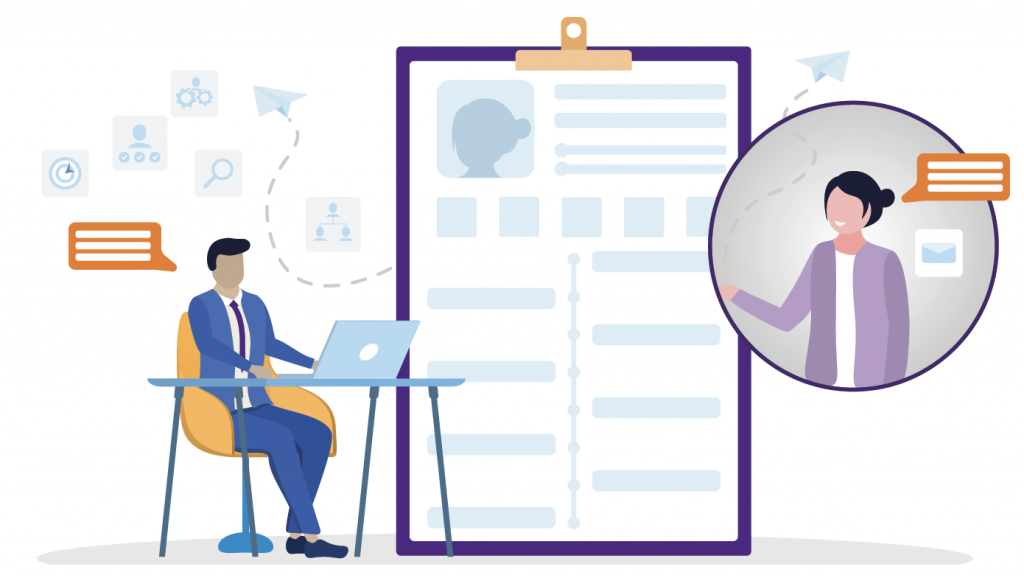Preparing for Virtual Interviews and Overcoming Zoom Fatigue
Mike Caldwell gives advice on how to get ahead in the remote recruiting process.
Preparing for Virtual Interviews and Overcoming Zoom Fatigue
Mike Caldwell gives advice on how to get ahead in the remote recruiting process.
What tools do TCU students and alumni have to access and prepare for virtual interviews?
The Center for Career & Professional Development has been preparing students for remote interviews for many years. Prior to 2020, a number of TCU employer partners utilized on-demand formats and online video for first-round interviews. At the start of the year we added tcu.biginterview.com, a remote interview coaching system available to all students and alumni.
TCU is also a member of the Handshake network of schools. This provides access to thousands of employers and job postings, local and nationwide. Students and alumni can utilize Handshake to connect with our team of career consultants for personalized coaching, feedback and preparation for the virtual recruiting process.
How can applicants be successful when interviewing or networking remotely?
As with traditional interviews, practice and prepare. Alumni and students may start with a mock interview on Big Interview and then move toward attending additional virtual employer sessions. Prior to the interview or event, test your audio, video and other settings to ensure you will be ready for the meeting. Research the company and contact beforehand. Find a quiet location with good lighting, and bring great questions. Here’s some advice from an employment partner:
Be genuine and do small things to set yourself apart. Virtual recruiting creates a lot of opportunities to be creative and do things that you would not generally be able to do during traditional in-person recruiting. Think outside the box, leverage your network, network for the sake of developing meaningful relationships rather than with the intent of getting a job.
— Hien Tran ’17, supplier diversity and innovation program manager for Dell

Illustration By Getty Images © RUDZHAN NAGIEV
Virtual (and in-person) networking can be hard. How do I stay motivated in the process?
“Zoom fatigue” started trending this year. When juggling online classes, appointments and exercise sessions, it can be a mental strain to add virtual social meetups to the mix. Start by strategically scheduling your networking time if possible. Build in breaks and plan your schedule in advance. If you are a virtual networking pro, find someone to mentor through the process. Helping others is both challenging and motivating. Also, incorporate phone calls into your networking strategy. Sometimes a brief chat with an alumni mentor or potential employer can be more effective than a 30-minute Zoom meeting. Remember that there are a lot of positive benefits of virtual recruiting. Here’s what a recruiter had to say:
I’ve really enjoyed the flexibility that virtual recruiting/networking offers. Traditionally, we have been limited by time and geographic constraints of recruiting in person. However, now with virtual recruiting, we can extend the recruiting process out across several weeks and increase engagement (more events, more touch points with students, more time to evaluate) than our traditional on-campus recruiting model that spanned across a few days.
— Hien Tran, Dell
I like the accessibility it gives to individuals who might not have had the opportunity to attend in-person events in the past. Work, practice or something else might have prevented someone from getting to the event in time. From a location standpoint, it evens the playing field and shortens the commute!
— Remy Crespo, talent scout for T-Mobile
What about diversity and inclusion practices related to virtual recruiting?
During the summer, the Center for Career & Professional Development renewed our commitment to diversity and inclusion. We are working to partner with employers to meet these goals. Our goal is to prepare all students to have access to meaningful opportunities and thrive in a multicultural workforce.
As a part of the 2030 goals at Dell, 25 percent and 15 percent of our U.S.people leaders of our U.S. workforce will be Black/African American and Hispanic/Latino minorities. Furthermore, 50 percent of our workforce and 40 percent of our leaders will be women. All our recruiting strategies are in alignment with these 2030 goals and we have included initiatives within our strategy in order to accomplish these milestones. This includes events and networking opportunities to provide opportunities for us to identify talent within generally underrepresented groups.
— Hien Tran, Dell
Send your career questions to tcumagazine@tcu.edu
Mike Caldwell is the executive director of TCU’s Center for Career & Professional Development. For more information about careers, visit careers.tcu.edu

Your comments are welcome
Comments
Related reading:
Alumni, Features
Lighthouse for the Blind CEO Saw the Possibilities
A varied career in business took Platt Allen from data systems, to entrepreneurship, to helping the visually impaired reclaim their lives.
Features
Service-Learning Program Connects Students with Community
Engagement outside the classroom goes beyond volunteering to shape the student experience.
Alumni, Features
What Kind of Job Can You Get with a Liberal Arts Degree?
After this class, liberal arts majors see the opportunities.